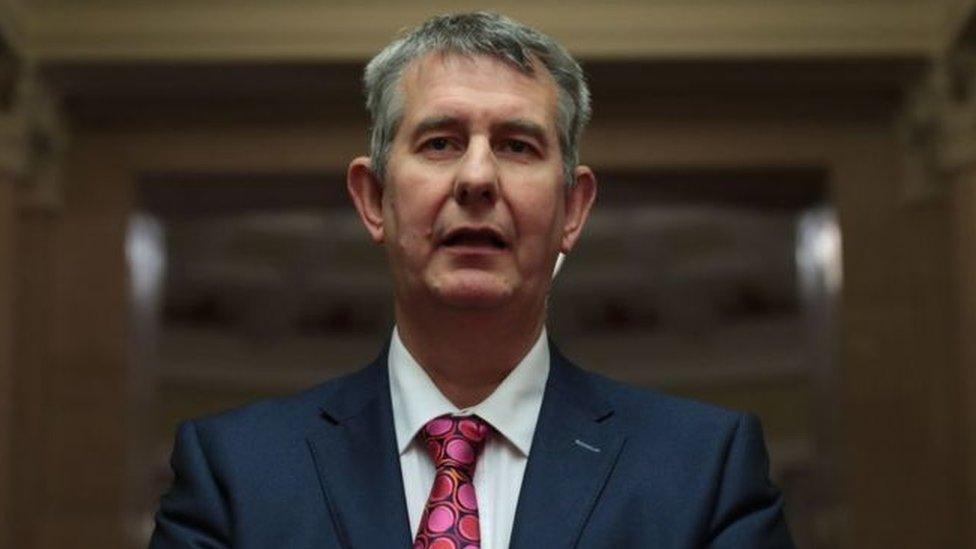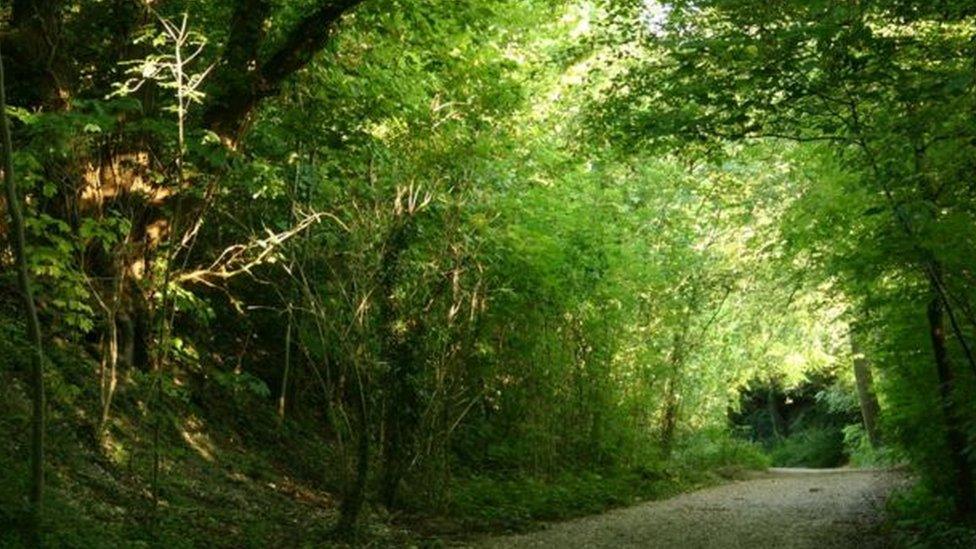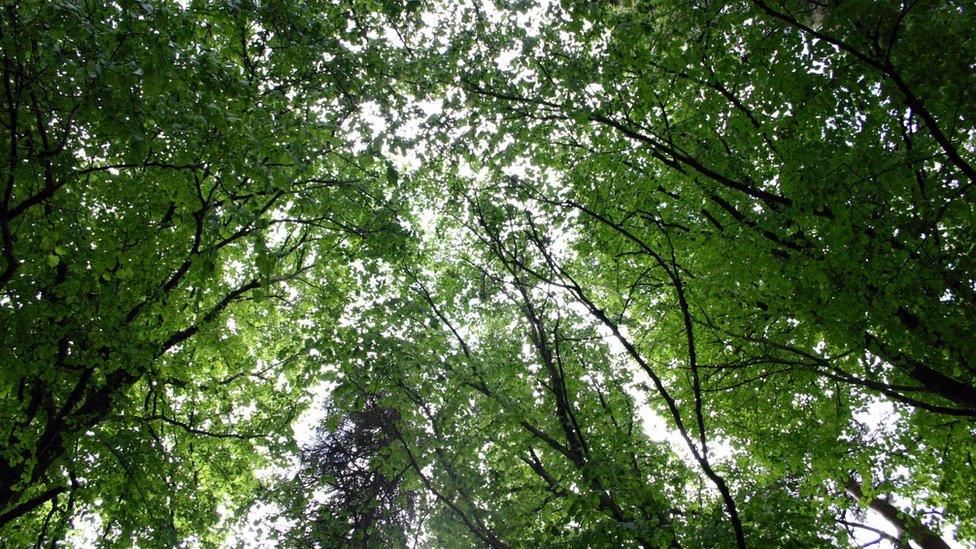Tree planting: Edwin Poots pledges to plant 18m trees over 10 years
- Published

Edwin Poots said he had spoken to ministers and council chiefs and asked them to identify publicly owned land for the purpose
Environment Minister Edwin Poots has pledged to plant 18m trees at a cost of £80m over the next 10 years to store carbon and improve NI's woodland cover.
He told the assembly it would deliver 9,000 hectares by 2030.
He has spoken to ministers and council chiefs and asked them to identify publicly owned land for the purpose.
There was no detail on what percentage of the new trees would be native broadleaves and whether any would be commercial forestry.
Agencies such as NI Water and the Roads Service, which own large swathes of land, will be key to the plan which is being called "Forests For Our Future".
Northern Ireland has one of the lowest levels of woodland cover in Europe at just 8%.
Only about 200 hectares are planted a year in Northern Ireland and the UK government advisory body, the Committee on Climate Change, has already recommended that at least 900 hectares a year should be a minimum target to help reach wider UK targets.

Northern Ireland has one of the lowest levels of woodland cover in Europe at just 8%
The Woodland Trust has said that up to 2,000 hectares a year would be needed to hit an existing target of increasing Northern Ireland's woodland cover to 12% by 2056.
Mr Poots said when it came to wide-scale tree planting, it was not the trees that were expensive, it was the acquisition of land.
He said if the department was to buy hundreds of hectares of land a year at a cost of £25,000 a hectare that would be a huge burden on the public purse.
"So the logical thing to do is to use the land that's already available to you," he added.

Thousands of trees are being planted at Aughrim Hill in County Down
One of the biggest ever tree planting projects is under way in County Down at the moment.
Forty hectares are being planted with native species like oak, birch and Scots pine by the Woodland Trust.
The £200,000 plan is being funded by the Department of Agriculture, Environment and Rural Affairs (DAERA) using EU money through the Rural Development project.
One hundred and ten thousand native trees are being planted on the site at Aughrim Hill near the village of Attical between now and the end of spring.
- Published14 January 2020
